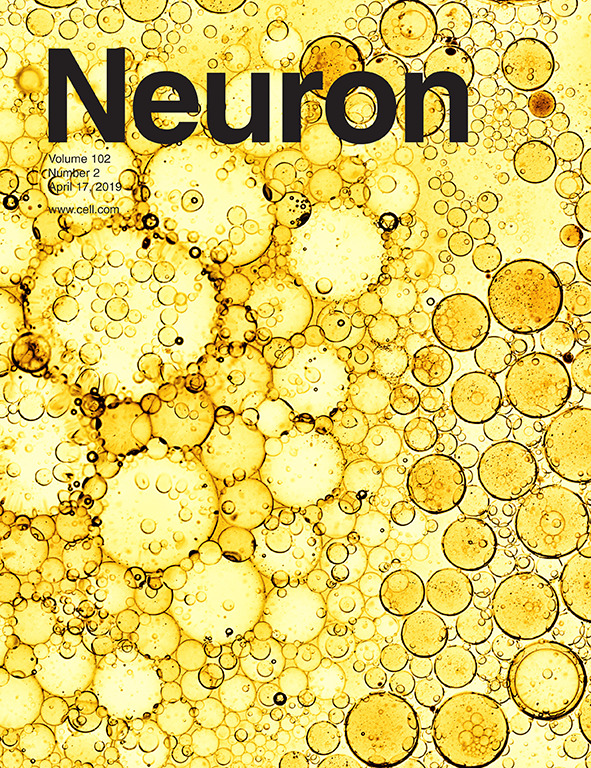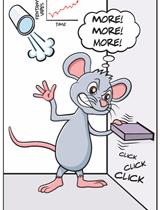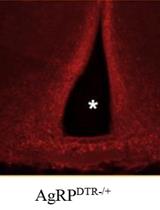- EN - English
- CN - 中文
Assessing Rough-and-tumble Play Behavior in Juvenile Rats
幼年大鼠追逐打闹行为分析
发布: 2020年01月05日第10卷第1期 DOI: 10.21769/BioProtoc.3481 浏览次数: 5496
评审: Arnau Busquets-GarciaMohammed Mostafizur RahmanAlexandra Gros
Abstract
Play is a complex social behavior that is highly conserved across mammals. In most species, males engage in more frequent and vigorous play as juveniles than females, which reflects subtle yet impactful sex differences in brain circuitry and development. In this protocol, we describe a behavioral testing paradigm to assess social play in male and female juvenile rats. We highlight the behavior scoring criteria for distinguishing rough-and-tumble play from other play-related social behaviors. By analyzing both sexes, play behavior can be leveraged as a powerful tool to understand the sex-specific development and expression of social behavior.
Keywords: Social play (社会性游戏)Background
Play is a highly conserved social behavior expressed by juveniles in several mammalian species, from rodents to humans (Auger and Olesen, 2009). Play is highly complex, involving dynamic interactions between conspecifics and is necessary for the development of appropriate social, cognitive, and affective behaviors later in life (Van den Berg et al., 1999; Von Frijtag et al., 2002; Baarendse et al., 2013). In many species, males engage in more frequent and vigorous play, called rough-and-tumble play or play fighting. This sex difference in behavior is developmentally programmed and is the result of sexual differentiation of the brain (Auger and Olesen, 2009; Thornton et al., 2009).
Here we describe a protocol to assess juvenile play using male and female rats. Each day throughout the juvenile period, rats are paired with an age-, sex-, and treatment-matched partner and play behavior is analyzed. In this way, this protocol is used to assess sex differences in baseline or “naturalistic” play. When combined with early-life pharmacological or genetic manipulation, this protocol can be used to study the processes of brain sexual differentiation and the development of social behavior circuitry (Vanderschuren et al., 2016; VanRyzin et al., 2019). Alternatively, the protocol can be performed as a single-trial to study sex differences in the activation of neural circuitry underlying play (Veenema et al., 2013; Bredewold et al., 2018).
Materials and Reagents
- Male and female juvenile (4-5-week-old) Sprague-Dawley rats
Notes:- We breed and maintain our own colony at the University of Maryland School of Medicine. This facilitates early-life treatments with pharmacological agents predicted to affect masculinization and avoids stress due to animal shipping or relocation. Animals are kept on a 12:12 h reverse light:dark cycle.
- Rats are tested as sex-, treatment- and age-matched non-sibling pairs. These “play pairs” will remain constant across multiple days of testing such that each animal is playing with the same play partner every day. To achieve this, we plan experiments to include rats from at least two separate litters. Depending on the number of experimental conditions, we will test at least two cohorts of play pairs (2 sets of paired litters, or 4 litters total) (see Figure 1A for experimental design and timeline).
- At birth, litter size is culled to 12-14 pups per dam to avoid confounds of over/under nutrition and maternal care. Litters are kept as sex- and treatment-balanced as possible, and litters with an initial sex ratio of > 2:1 males:females (or vice versa) are not used in our experiments due to potential in utero effects of prenatal testosterone.
- Pharmacological agents of interest
Note: Depending on the hypothesis under study and the experimental timing of treatments, animals may need to be treated much earlier in life (prenatal exposure, postnatal masculinization, etc.; see VanRyzin et al., 2019 for examples).
Figure 1. Representative experimental timeline and behavior illustrations. A. On the day of birth, pups from two litters are sexed, culled and treated (if necessary), and assigned to sex- and treatment-matched pairs with the opposite litter. The pups are allowed to grow undisturbed until the juvenile age. Beginning at P26, play behavior can be assessed daily throughout the juvenile period. B. Illustrations depicting rats engaging in the three main rough-and-tumble play behaviors–pouncing, pinning, and boxing.
Equipment
- Custom plexiglass testing arena 49 cm x 37 cm, 24 cm high (see Figure 2A)
- Behavioral testing room equipped with red light
- One to two lamp stands with red light bulbs for illumination of the testing arenas
- Video recording device and tripod stand
Note: We typically use a smart phone with a tripod adapter to record behavioral tests. - TEK-Fresh bedding (Envigo, catalog number: 7099)
- Fur-marking pen or permanent marker (Stoelting, catalog number: 50440-1)
- Stopwatch or timer
- Cleaning solution
Note: Several different cleaning solutions may be used to sanitize the arenas after testing. We typically use MB-10 (Quip Laboratories).
Procedure
文章信息
版权信息
© 2020 The Authors; exclusive licensee Bio-protocol LLC.
如何引用
VanRyzin, J. W., Marquardt, A. E. and McCarthy, M. M. (2020). Assessing Rough-and-tumble Play Behavior in Juvenile Rats. Bio-protocol 10(1): e3481. DOI: 10.21769/BioProtoc.3481.
分类
神经科学 > 行为神经科学 > 实验动物模型 > 小鼠
您对这篇实验方法有问题吗?
在此处发布您的问题,我们将邀请本文作者来回答。同时,我们会将您的问题发布到Bio-protocol Exchange,以便寻求社区成员的帮助。
Share
Bluesky
X
Copy link













